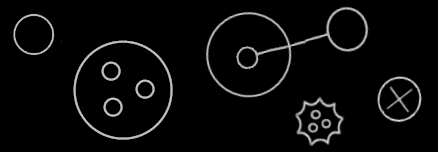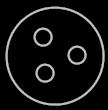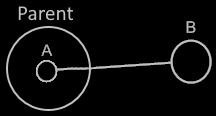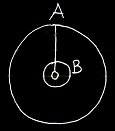Objects

Contents
Introduction
In object oriented programming, the object is one of the most basic elements of a computer program. An object can represent a thing, an idea or a place, a number or a collection of other things or anything else.
In Circular an object is represented by a circle:

Sub-Objects
One thing can be composed of other things. For that, an object may contain a number of sub-objects. This is drawn out as circles inside other circles:

Object Reference
A sub-object can point to another object, residing elsewhere in the system. It is considered a link, redirecting to another object:

The sub-object A has a line, making it a reference. It connects outward of toward object B.
Reference to Parent
This is an edge-case in object relationships: a child referencing a parent:

The picture shows a child B. It has an object reference in it. It points to the parent A.
It might look a bit unusual compared to the object reference notation introduced earlier, so it seemed to deserve some separate attention here.
Nothing
Sometimes nothing is filled in yet for a related object. To display that in a diagram, a cross is placed inside a shape:

Multiplicity
Multiplicity means the distinction between single and multiple. A related object can be a single object, but sometimes it is part of a list.
The concept of single is primarily displayed as a circle:

But for a list, a spikey nonagon can be used:

List items are then placed inside the nonagon:

A list can be given a name, while its individual items may remain nameless:

Conclusion
So far this description, of different situations of programming with objects, and how they might look in a Circular diagram.